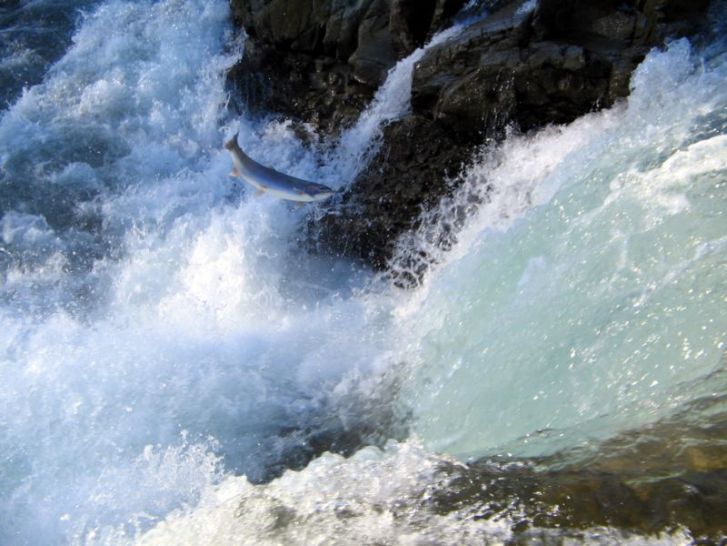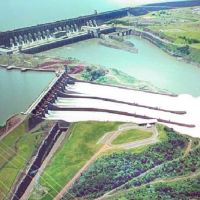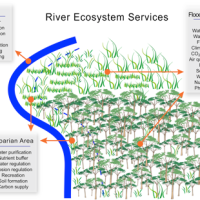The effect of dams on fish biodiversity: A global view.

A salmon jumping up a waterfall in Canada. Diadramous fish species often face mortality or reproductive failure when their migratory route is obstructed by dams. Image: Jerome Charaoui.
The world is currently facing a freshwater biodiversity crisis and the key to preventing further extinction lies in understanding all the threats facing aquatic habitats. Global freshwater habitats are losing biodiversity faster than terrestrial or marine areas, but so far they are the least well understood. Amongst the threats to freshwater species, including climate change and pollution, the most difficult to quantify are man-made obstructions to water flow. Dams can be found in every major biosphere, but very little is known about the effect of river obstruction on freshwater biodiversity, especially on a global scale.
Damming a river has a variety of effects on the freshwater ecosystem, more than just altering the flow from A to B. Dams create calm bodies of water, changing overall temperature regimes and sediment transport, leading to conditions which tend to favour generalist species. Loss of specialist species, particularly endemics, changes the community structure and leads to biotic homogenization. A dam will withhold sediment in the reservoir, not just decreasing the amount of substrate available to local freshwater species, but even impacting diadromous, estuarine and marine species much further downstream. The competition between resident species for food and breeding sites will increase as damming isolates populations, and perhaps more importantly, damming completely restricts migratory fish species. Isolation may lead to decreases in genetic diversity and therefore puts species at greater risk from disease. All of these effects may be exacerbated by changes in the surrounding land use. Overall, damming river flow will lead to both a loss of native species, but also an increase in exotic species which are more likely to become established in degraded habitats. For this reason, dams are one of the greatest global threats to freshwater biodiversity.
A lack of data on global freshwater fish distributions has restricted a thorough investigation of the dam-related threats to fish species. However, a recent publication by Liermann et al maps global dam obstruction, identifying areas and taxa at risk of species loss. This is the first paper to quantify this in a manner which could be useful for future planning and management. Liermann et al quantify and map dam obstruction in all of the world’s main freshwater ecoregions (397). These are areas that contain geographically distinct groups of freshwater communities. This data was integrated with fish distribution data, particularly focussing on the numbers of obligate diadromous species (species demonstrating migratory behaviour between freshwater and marine habitats, such as the Salmonids) and ecoregional endemics. These species were used as a measure of potential species loss in relation to dam obstruction. The model also included an assessment of the difference between dam impact in an undisturbed landscape and the compounded effect of dams and land-use change. The distribution of areas predicted to be most affected by climate change were also compared with the distribution of the most heavily obstructed ecoregions.
Liermann et al produce the first comprehensive set of maps for highlighting habitat fragmentation by dam obstruction and the corresponding taxa and ecoregions most at risk of species loss. This information is vital for providing information needed to identify the freshwater systems most in need of protection. 18 ecoregions were identified for which less than 50% of the freshwater systems were free flowing. These areas include central and southern Iberia, the Mississippi, the Indus Basin, and the Murray Darling. Some of these areas also face high levels of landscape alteration. Liermann et al identify 8 ecoregions which may be facing the highest level of threats to species loss, but would therefore benefit the most from conservation and restoration projects. These ecoregions also have a high number of endemic and diadromous species, the loss of which would have effects on even global biodiversity! The study provides a gradient score for each ecoregion, from freshwater habitat restoration to conservation (at the least affected end). This will allow the global community to prioritize both management and research efforts for more efficient prevention of the current freshwater biodiversity loss.














